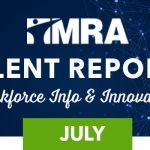Human resources is a function that transcends all facets of an organization to include, but definitely not be limited to: hiring, termination, performance management, personnel recordkeeping, benefit administration, legal compliance, and overall employee relations. Unfortunately, organizations that don’t place enough importance on the value of these functions are losing out on productivity and efficiency, and very well may be putting themselves at risk of noncompliance and potential lawsuits. But, in smaller organizations where a full-time HR person is not feasible, how can the function be managed?
In any organization—of any size—at least one person should be designated as the “HR contact.” While certain HR duties may be shared among other individuals, it is good business practice to at least identify one individual who is responsible for keeping abreast of changes in employment laws and administrative practices, and monitoring to ensure policies, practices, and forms are relevant and up to date. In smaller organizations, this overseer is often the controller, office manager, or executive assistant. He or she will typically have involvement with the payroll function and/or have a bird’s-eye view of the happenings at the organization. Be sure that this individual is trustworthy, credible, competent, and forward-thinking. It is essential that the HR contact take the role seriously and consider it a valid part of his or her job, not simply an add-on of responsibilities.
Consider these proactive steps when managing the HR function in an organization without a designated HR department:
- Clearly define the roles and responsibilities of the HR contact, management, and anyone else involved in any HR-related tasks. Communicate these roles and responsibilities to the entire organization so employees and management are aware of the designated “go to” person(s) for their specific needs (e.g., benefits questions, personnel recordkeeping, payroll, on-the-job injuries, etc.).
- Assess the training needs of anyone performing HR-related tasks and educate as needed. While it may not be feasible to have an expert in all facets of HR, at minimum, classes that provide an overview of the different functions involved in HR can build a foundation of what is or may be involved in running an “HR department.”
- Develop written policies and/or standard operating procedures to document important tasks. Having written documentation of procedures and having others cross-trained in functions is critical, particularly in smaller organizations where the tasks are normally only completed by one person.
- Subscribe to a variety of HR-related newsletters, publications, and e-alerts to keep abreast of changes in the legal landscape and to glean information about best practices in the area of HR. Attend legal updates or briefings held by MRA and law firms.
- Participate in HR roundtables or other networking groups to share information, ideas, issues, and to benchmark best practices.
Most importantly, surround yourself with outside experts who can assist with complex issues. Use selective outsourcing. Resources that can provide help include HR consultants, tax accountants, payroll providers, insurance brokers, third-party benefit administrators, employee assistance plan providers, etc. Utilize field experts on an as-needed basis, as well as periodically to conduct audits or “check-ins,” to ensure you stay on track, remain compliant, and run at optimal efficiency.



